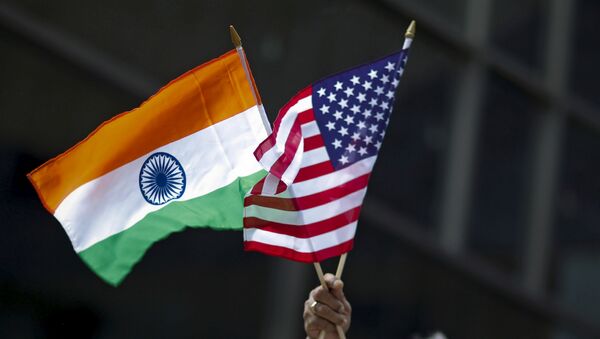Indian Finance Minister Nirmala Sitharaman’s announcement on 1 February of additional import duties on medical devices manufactured abroad, including those from the US, might further aggravate the trade-related trust deficit between Washington and New Delhi, Indian analysts say.
Just like with China, the researchers believe that President Donald Trump appears to be keen to re-negotiate with India on trade issues to satisfy his domestic constituency.
Currently, India imports between 70 and 80 percent of its medical devices, with a fourth of them coming from the United States. Imported medical devices are critical, innovative and high-risk in nature - either life-saving or life-enabling, and therefore, undergo rigorous testing in order to address the Indians' growing expectations from an evolving healthcare system.
“My hunch is that this is nothing more than a repeat of the import substitution strategy that India had followed in the past, that is, aim to produce items domestically and incentivise them over a period of time. However, we need to look at this issue of imposing a five percent health tax on foreign manufactured medical devices carefully. Encouraging domestic manufacturers to produce these devices is all very well, but quality is a very big question, for medical equipment like stents etc., in particular. The decision to increase the levy on these devices might become a flashpoint for both India and the US,“ said Abhijit Mukhopadhyay, Senior Fellow with the Economy and Growth Programme of the Observer Research Foundation (ORF), a New Delhi-based think tank.
Washington would most definitely flag its concerns over this issue with New Delhi, Mukhopadhyay says, while adding that President Donald Trump might not postpone his likely visit to India later this month as both Prime Minister Narendra Modi and himself were acutely aware that they need to achieve something positive to their respective domestic constituencies through their talks.
“We don’t have to look to far back. In 2018, Trump had threatened to terminate the renegotiated NAFTA (North American Free Trade Agreement that involves the US, Canada and Mexico) when the US Congress dithered over giving its approval to the United States-Mexico-Canada Agreement (USMCA). Trump is trying to renegotiate everything that he feels is standing in the way of improving the American economy. India is a small fish in the pond. See the ongoing US-China talks, there are some agreements, but nothing concrete. This is election year for Donald Trump, so, he needs a deal to speak about, whether it is with China, or India,” Mukhopadhyay explained.
Oommen C. Kurian, Head of ORF’s Health Initiative, had a different take on the issue. He said: “India is trying to encourage domestic manufacturing and also to expand patient access to various health-related initiatives. India imports $56.2 million (400 million INR) worth of medical devices from abroad. Current import duties range between 0 and 7.5 percent. There is a belief that an additional surcharge of five percent will generate $281 million (20 billion INR). This will be used to expand the government’s healthcare infrastructure in villages and medical devices sector is one area where 100 percent foreign direct investment is allowed.”
He further stated that when India had told the US in 2018 that it would not abstain from capping prices for more medical devices, regardless of the pressure on it to rethink price controls on heart stents and knee implants etc., there was a push back from Washington as they wanted a change.
In the context of the Indian market, he said a reduction in prices is being compensated by more items being purchased. The volume of stents has increased. The infusion of more funds in the domestic health sector through various government-run schemes has expanded the purchasing power of the lower 50 percent of patients considerably.
“Many international players will consider absorbing this five percent increase rather than passing it on to customers and losingheir share in an expanding market,” Kurian opined.
The proposed visit to India by President Trump is being linked to progress made in deadlocked bilateral trade talks, with Trump often complaining about the high tariffs imposed on American products by New Delhi. Differences had come to such an impasse that Washington terminated India's designation as beneficiary developing country under the Generalised System of Preferences (GSP) programme on 5 June 2019, which allowed New Delhi to export $ 5.7 billion worth of duty-free goods in 2017. India imposed retaliatory tariffs on 28 US products, including almonds and apples.
The US also wanted greater market access for its farm and manufacturing products, dairy items and medical devices, and a cut on import duties on some Information and Communication Technology (ICT) products.
Over the past year, the commerce ministers of both sides – India’s Piyush Goyal and Wilbur Ross of the US- have had several rounds of negotiations; the latest in New York in December, 2019.
The Indian healthcare industry was worth $150 billion in 2018 and is expected to reach $280 billion by 2022 due to increased demand for specialised and quality healthcare facilities.


